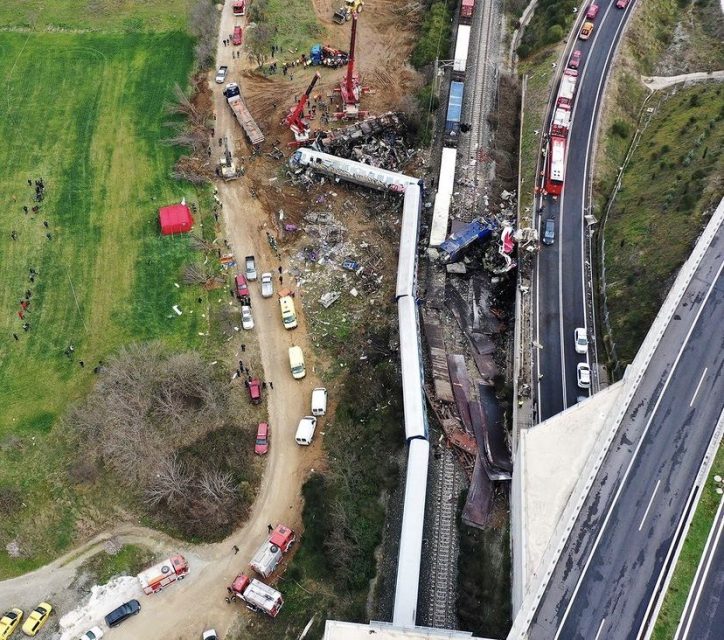Greece: at least 40 dead, 85 injured following passenger and freight train collision

A collision between a passenger train and a freight train in northern Greece has left at least 40 dead and 85 injured, of which 53 remain in serious condition. Among the deceased are the drivers of both trains and four staff members of the passenger train. The accident happened shortly after midnight near the city of Larissa. Hellenic Train has not communicated any official information on the tragic accident yet. However, the Greek police arrested the station master of Larissa as the main person responsible.
The crash involved a passenger train travelling from Athens to Thessaloniki carrying around 350 people. Just before the Vale of Tempi gorge, there was a head-on collision with a freight train. Both trains were reportedly travelling at high speed, a regional official was quoted as saying by Greece’s Skai television.

Such was the impact that the first two carriages disintegrated and the third derailed. A fire erupted almost immediately after that. Survivors say that passengers were thrown through the window upon impact. The army has been called in to assist in the salvage and rescue effort, Costas Agorastos, the regional governor of the Thessaly area, told media on site. The severity of the crash is complicating the rescue efforts among the wreckage. Bodies were still being found five hours after the crash.
While the cause remains unknown, eyewitness reports suggest that the emergency brake was applied shortly before impact. Two rail officials have been brought in for questioning. Other reports mention that there had been issues with the signalling system on the line in recent years. The passenger train involved in the crash is operated by Hellenic Train, which is run by Italy’s FS Group.
Railway workers warned – Commission had taken action
Minor railway accidents in Greece are, more or less, part of everyday life, after years of mismanaging Hellenic Train and railway infrastructure. In this context, railway worker associations had announced in early February that safety measures in Greece are insufficient to ensure safe train traffic across the country, thus resulting in frequent accidents or incidents. On top of that, they warned that Greek authorities should not wait for a major accident to occur to take action and proceed to upgrades.
A few days later, on 15 February, the EU Commission decided to refer Greece to the Court of Justice of the European Union for failing to comply with rules on railway transport. Specifically, Greece failed to fulfil obligations under the Single European Railway Area Directive that dictates authorities to conclude and publish contractual agreements with railway infrastructure managers. In simple words, the directive aims to provide transparency in certain processes like obligation fulfilment and emergency situations management.





